Skip straight to the recipes or read this introduction to modeling chocolate.
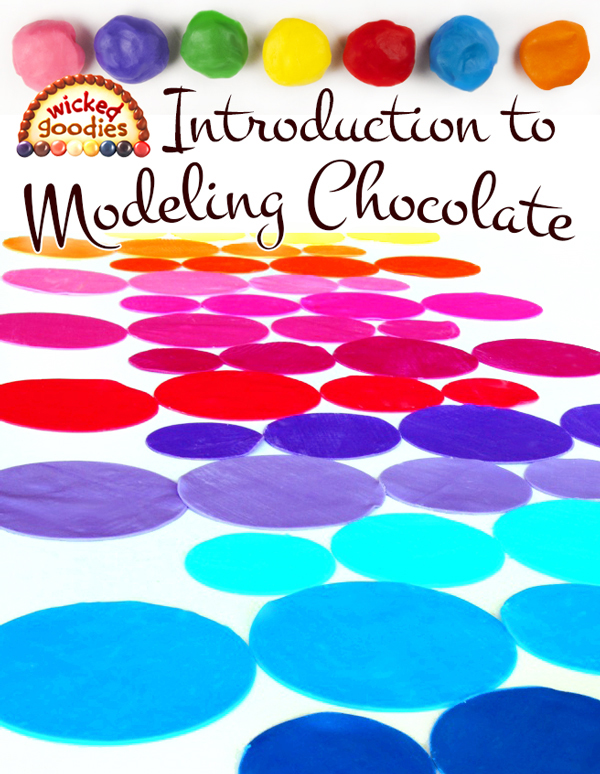
Modeling Chocolate
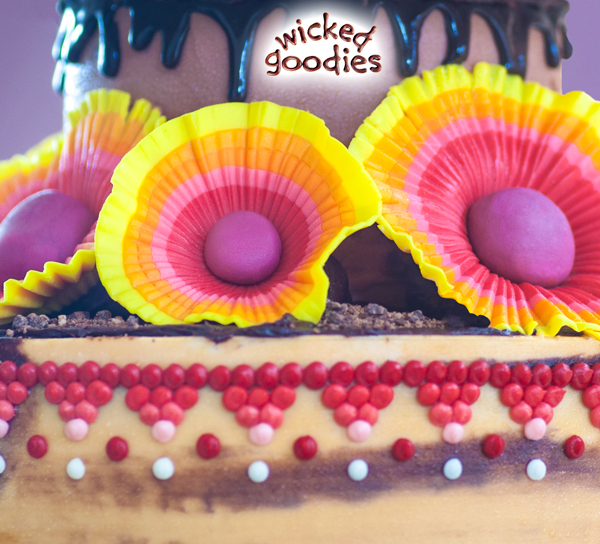
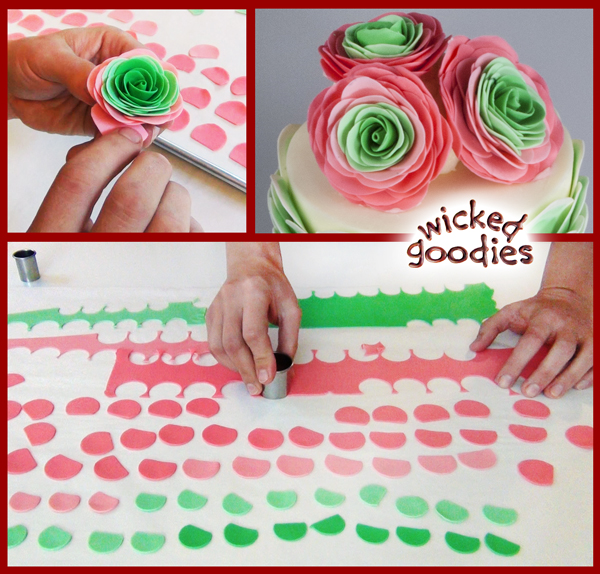
Rolled Modeling Chocolate
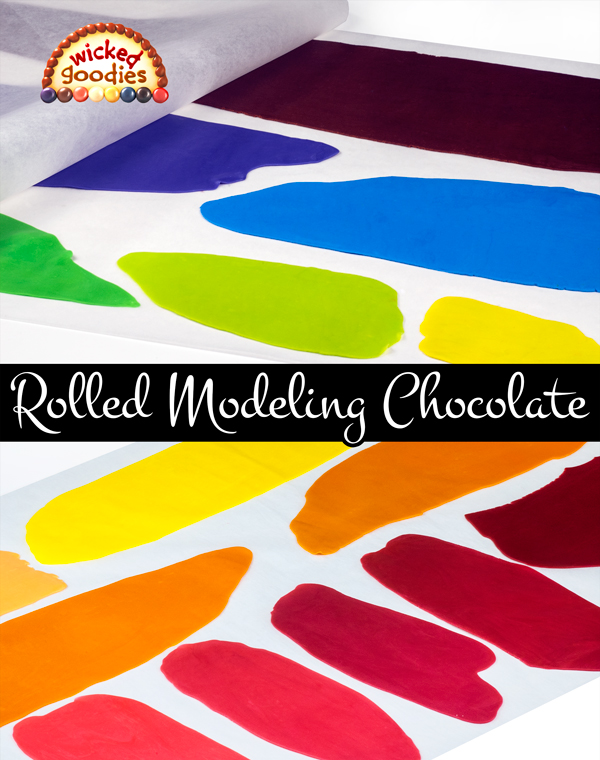
VIDEO: How to Roll Modeling Chocolate with a Pasta Machine
VIDEO: How to Roll Modeling Chocolate with a Rolling Pin
Ingredients
From scratch, modeling chocolate has only two ingredients: chocolate + sugar syrup. There is no tempering of chocolate involved; however, the technique and handling requires a similar level of care and understanding of chocolate. Note that the quality of modeling chocolate is only as delicious as the chocolate used to make it. Additionally, the proportion of sugar syrup to chocolate in the modeling chocolate formulas may require adjustments depending on the brand/quality of chocolate used.
Chocolate
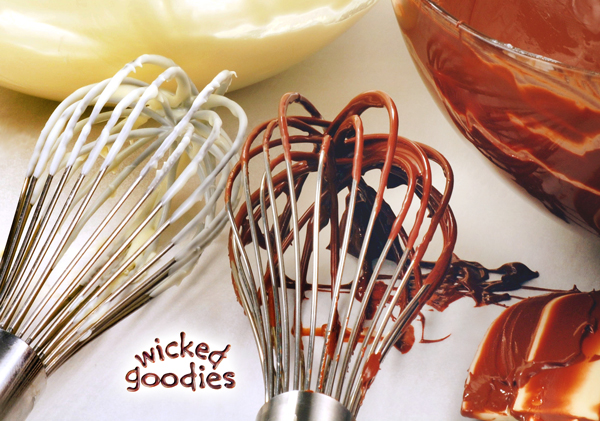
Follow this link to my tutorial, All About Chocolate for brand recommendations.
The Classifications of Chocolate and How They Pertain to Modeling Chocolate
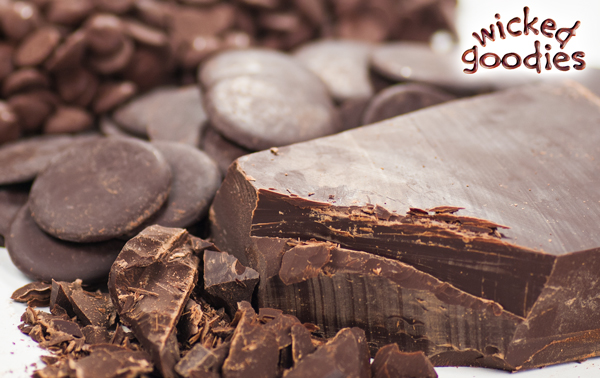 Bittersweet or Extra Dark Chocolate has the lowest percentage of sugar and therefore, the edgiest flavor. It is often denoted by the percentage of cocoa materials present, which can range anywhere from 35–100 percent. The higher the percentage of cocoa, the lower the percentage of sugar and the more bitter the taste. Bittersweet chocolate, rich in both color and taste, makes an excellent, not-too-sweet modeling chocolate.
Bittersweet or Extra Dark Chocolate has the lowest percentage of sugar and therefore, the edgiest flavor. It is often denoted by the percentage of cocoa materials present, which can range anywhere from 35–100 percent. The higher the percentage of cocoa, the lower the percentage of sugar and the more bitter the taste. Bittersweet chocolate, rich in both color and taste, makes an excellent, not-too-sweet modeling chocolate.
Semisweet Chocolate or Dark Chocolate is typically intended for baking purposes and commonly found in chip form. It is essentially dark chocolate that has been sweetened at 1:2 ratio of sugar to cocoa. It works well for modeling chocolate.
Sweet Chocolate is a term used only by U.S. standards to represent a lower quality sweetened chocolate containing no more than 15 percent real chocolate liquor. It works fine for modeling chocolate but has a diminished quality of taste.
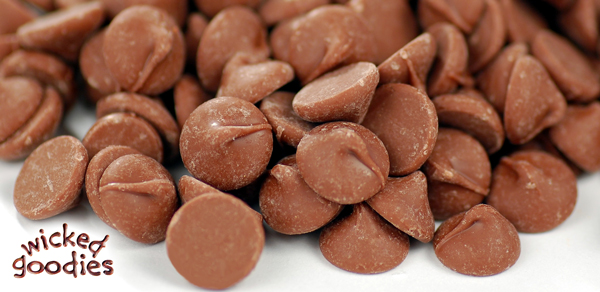
Milk Chocolate is dark chocolate with a milk product added. Although it can be used for modeling chocolate, its softness is not optimal for ease of handing or stability.
Compound Chocolate is the technical term for imitation chocolate that is made with some or all hydrogenated fats in place of real cocoa butter. Compound chocolate can be used for modeling chocolate, but it may be less stable and less tasty. The formula requires 10–20 percent less sugar syrup.
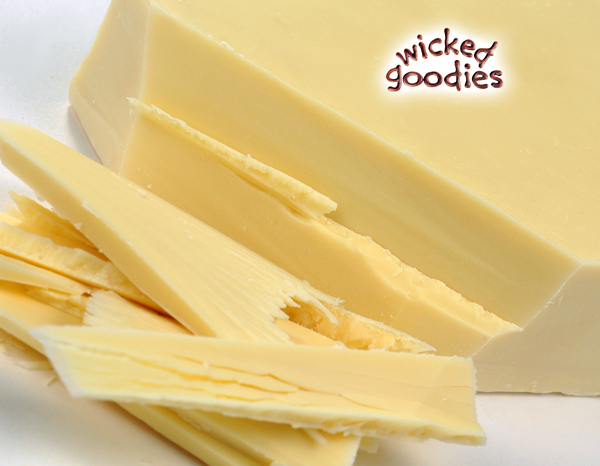
White Chocolate, a confection composed of sugar, milk and fat(s), is the basis of all colors of modeling chocolate except brown and black. True white chocolate contains cocoa butter, which lends an ivory tint to the hue. Imitation brands like Nestlé’s (U.S.) Premium White Morsels and Merkens Super White Confectionery Coating substitute hydrogenated fats for cocoa butter.
White Modeling Chocolate Quality Comparison
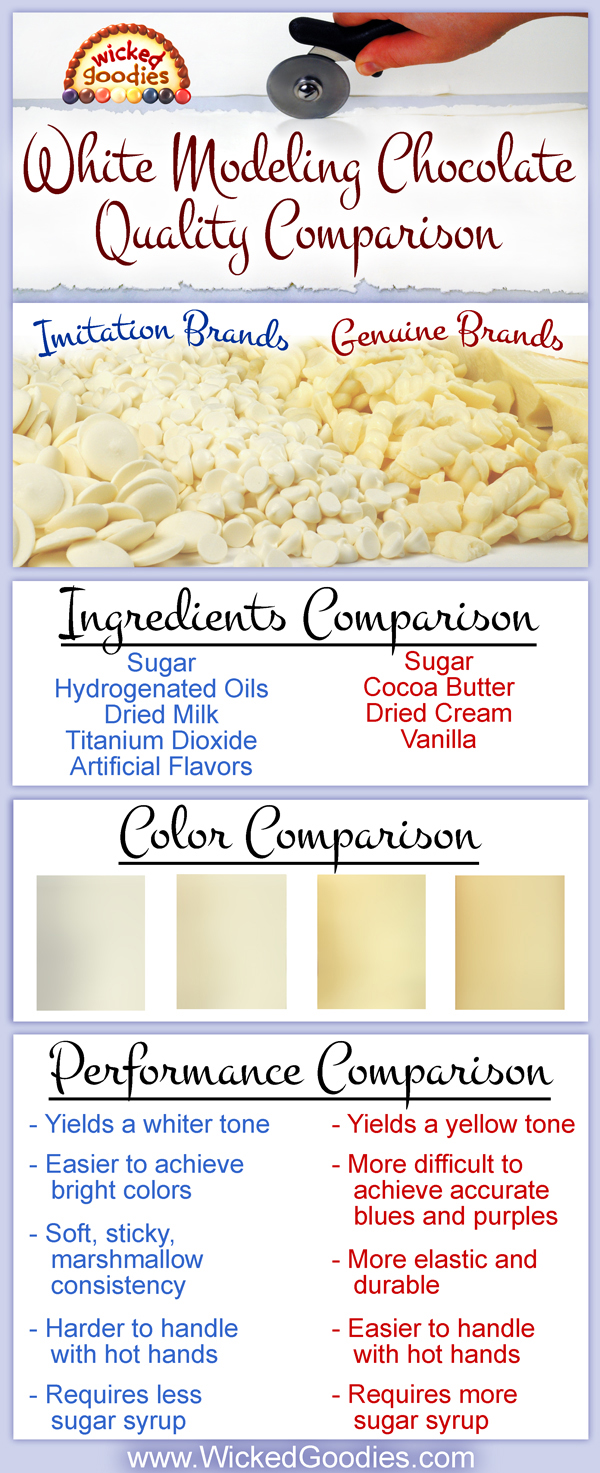
Sugar Syrup
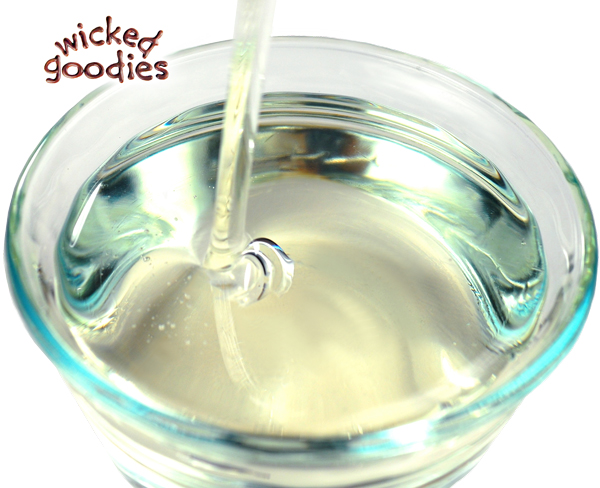
Liquid Glucose, a slightly more dense sugar syrup, may be substituted for corn syrup. It is too complex to produce in the average home kitchen but it is obtainable worldwide. However it tends to be costly.
Golden syrup may be used but it will yellow the tone of white modeling chocolate.
Dark corn syrup may be used but due to its brownish tone is only recommended for use with dark chocolates.
Rice syrup has reportedly been used successfully by many readers of this blog.
This is a sample from the book
Cake Decorating with Modeling Chocolate

NEXT: Modeling Chocolate Recipes


You are reading an excerpt from
Cake Decorating with Modeling Chocolate
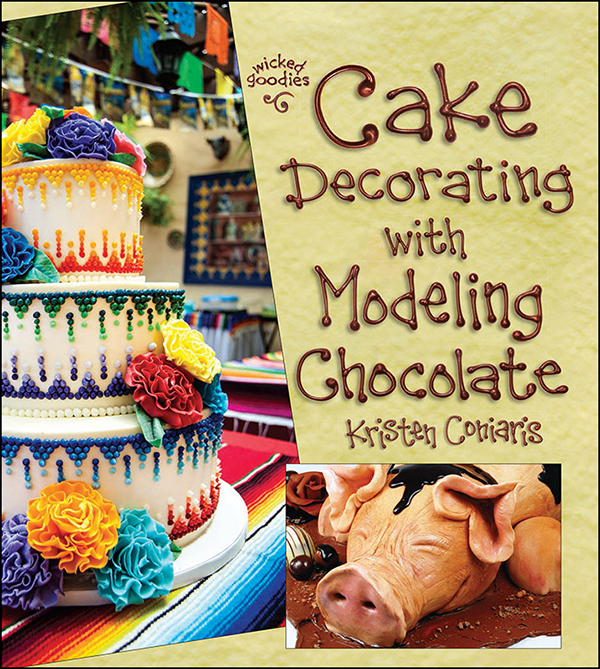 You might also enjoy
You might also enjoy
Marbled Modeling Chocolate Patterns
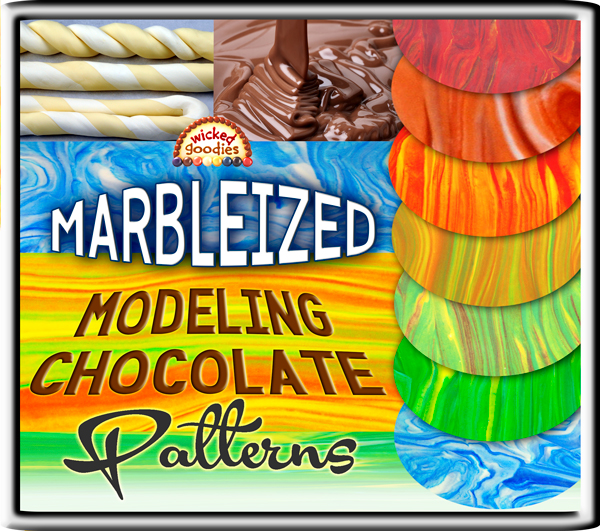
Chocolate Optical Illusion Cake Tutorial
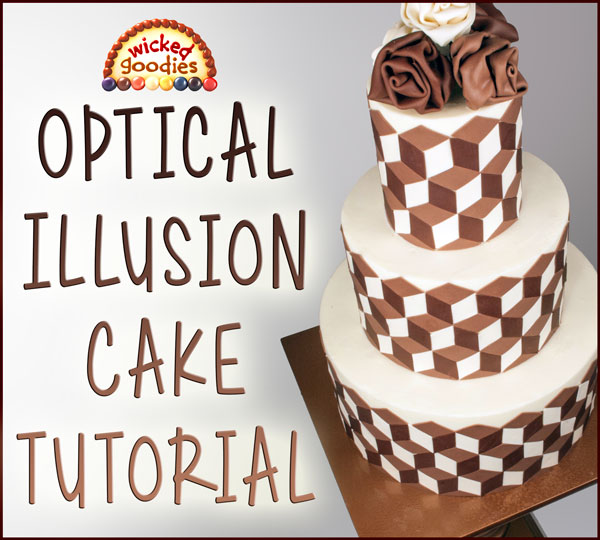
Folded Modeling Chocolate Kanzashi Flowers Tutorial
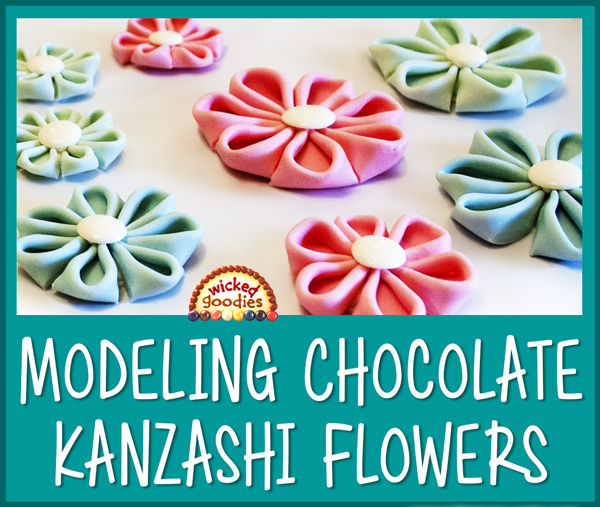
Baby Zoo Animal Cupcakes
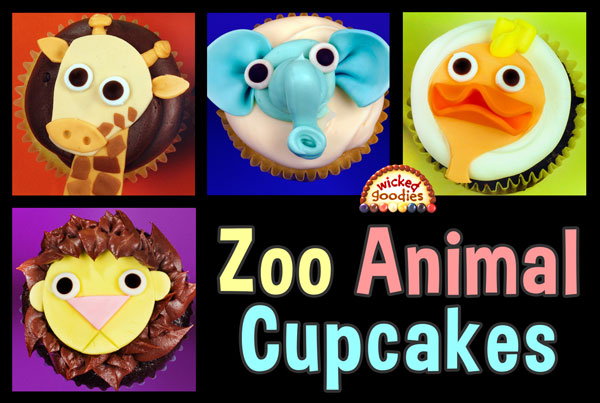
Recommended Modeling Chocolate Tools
Modeling Chocolate Resource Guide

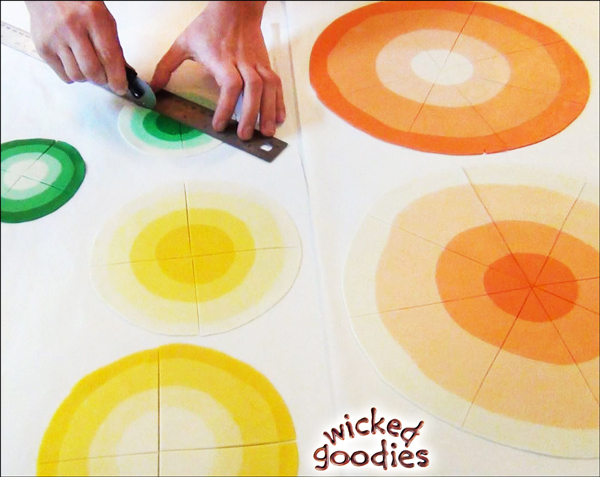





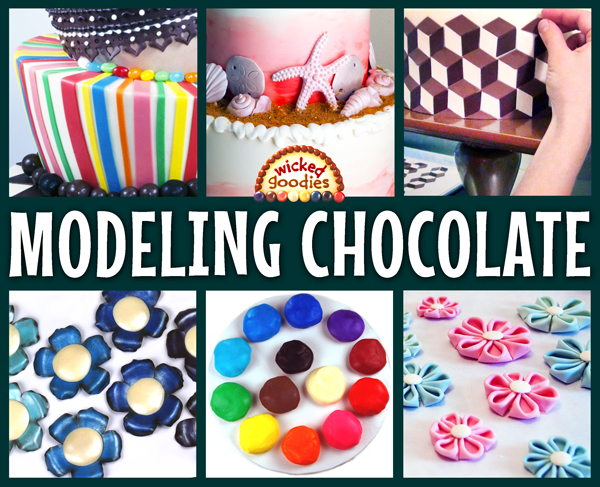
Can I use maple syrup(like the kind for pancakes and waffles) instead of corn syrup?
No. Unfortunately, maple syrup doesn’t work for this application.
Hi
Can I use this on top of sugar cookies instead of fondant? What’s the best way to attach them to sugar cookies?
Yes, absolutely you can. Moisten the backsides with water or dab with icing to attach them.
Hi Jo, I was wondering if there is any place I can find out how to measure chocolate to corn syrup ratio for different amounts and colours of modelling chocolate that I need to make. The cakes I’m making require several different colours and large/small amounts. Thanks for all of your help!
I want to do the optical illusion cake. I dislike the taste of fondant. I’m very excited about purchasing and learning about modeling chocolate. I’m sure I will have questions.
Good luck!
I live in South Africa and we do not have access to corn syrup or liquid glucose syrup but I have found glucose powder in pharmacies- can I make the liquid glucose syrup from the pure glucose powder? Thank you!
Liquid glucose IS available in South Africa. I sell it in my shop – Baking Basics, in Edenvale Gauteng. I don’t know what area you are in, but any specialized baking supply store should have it. Corn Syrup is NOT available in SA
You will find corn syrup and liquid glucose syrup at Bakers Bin In Pretoria
Hi…i live in the philippines…first time for me to make a chocolate modelling..im comfusing what kind of chocolate brand do i want to use…
How many books do you have and what’s the title of them? I’d like to get them all if possible. Are they available in hardback covers?
The only one that is printed is the modeling chocolate book. All the rest including that one are digital. You can find them all here: Wicked Goodies Books
I use valrhona ivoire 35% chocolate blanc white chocolate would the recipe (formula) be the sameasiest as above to make the modeling clay.
Hi,
I live in India. The summers here are very hot with temp of 40-50 dergee. Do you think modelling chocolate can work in such weather conditions. If yes then which chocolate should be used for the same.
Thanks in advance
Hi,
It’s fine to use if you have an air conditioned work space, air conditioned vehicle and the cake will be displayed indoors. It’s probably not a good idea on a hot summer day if the cake is to be outdoors. Although I have pulled it off in hot conditions (up to 40 degrees C), I have never used it in conditions hotter than that.
thnx for the response. will surely try and update you.:)
Hi,
Is your experience for both dark chocolate and white chocolate? It should be around 28C for my cousin’s wedding but we’re in the Philippines so I can never be too careful.
Thanks!
Yes my experience is with all kinds. 28C is okay. Just follow the directions in the book. Be careful to avoid sun.
Kristen wow,I’ll purchase this book right away n’ hope to improve my chocolate modelling skills.
Go for it, Anna! Have fun!
My god I am soooooo happy I already Oder the book I can’t wait to see what did I do wrong lol , thanks sooo much for all this info , I have only one problem is there any brand of chocolate inside what I saw above because I live in Germany and I don’t know which brand or kind of chocolate should I use? maybe that’s why it’s not work with me I did one it’s was too hard and another it was too ok but not starching and now I do anther one with you steps and I will see tomorrow 🙂 I hope it work
May,
I’m not sure what you have for chocolate over in Germany. Can you name some brands? If any of them sound familiar, I can let you know. Any time that I switch marques, I have to start all over tweaking the proportions, so these are common pains that you are experiencing. The ticket is to find a brand that works for you and then stick with it, measuring the two ingredients the same way every time.
Thanks sooooo much for the fast answer , well i tried this chocolate i will put the pic and my modeling chocolate its Hmm i dont know what the Name of it lol , i will also put the pic for it and please pleassssse help me I tried sooooo much and alwyes hard or sapreadet and this time it about staching but it’s well you will see and I just got the book and it’s wonderful I lovvvve it ,forgive me English and if you have the answer for this problem in the book please tell me which page thanks thanks thankkkks
This is what I use it so far
We have this chocolate Callebaut is it work good ? And sorry for my sooo many question :-))))))))
Yes Callebut is good. See page 24-27 of my book for answers.
Thanks soooooo muchhhhh for your answer and I will read it right nowww thanks again
Reading above comments it looks like I overworked my white choc with liquid glucose.it is very oily.is there any way of saving it at this stage plz?
Tia, Try kneading the oil back in gently, a little at a time, over the course of 3-4 hours. Keep the batch in the coolest possible place while doing this. Only knead for 10 seconds each time, just enough to fold the oil back in.
Don’t let the oil set up hard or you will then have worse problems to contend with.
I just watched a video on YouTube how to fix modeling choc. and it looks as though it turned out just the same as the original.
Hi, great site! I followed the recipe for white chocolate and used callebaut and glucose syrup. the chocolate is now really hard. I tried to roll it but nothing happened so i broke a smaller piece off and tried warming it in my hands slightly, then when i rolled it , it went crumbly. Did i not add enough syrup as i haven’t kneaded it yet? Can it be saved? Thanks
Hi Jo,
Sounds like you are following the right steps so if your batch of modeling chocolate is still crumbly after being worked, try kneading a little more glucose syrup into it. That should help balance out the dryness.
Hi, I tried that but it didn’t help, I’ve made another batch with more glucose to start with and although it wasn’t as hard its just as crumbly, when adding glucose at the kneading stage it just goes greasy and still as crumbly. The dark chocolate one worked out great….Ive got your book, i melted the chocolate slowly and off the heat for most of the time….help??
Ahhhhh I see. That’s a different situation when the chocolate separates and the fat comes out like that. It’s very common with white modeling chocolate, usually due to overheating or over-mixing the batch. In this case, it was probably already separated to begin with and then got overworked when you kneaded it. Although it can be frustrating, don’t give up! There’s a lengthy explanation with solutions in this book on pages 24-26. White chocolate is temperamental but modeling chocolate can almost always be saved.
ok, thanks, i’ll keep trying!!
Hi Jo,
From what i read on the web, glucose is much thicker than the corn syrup used in the US. So you would need to add some water to thin out glucose. You may want to check this on the net before you try again.
Thanks!
That is not necessary. The glucose is thicker but it can be used interchangeably with the corn syrup.
Hello,
I have made this in the past and loved it.I was just wondering if it’s possible to use this to do lace in the silicone moulds?
If not not do you know of a recipe for icing to make lace with.
Thank you
Yes you can press modeling chocolate into most types of silicone mold. It works great with molds! I recommend brushing both the modeling chocolate and the mold with corn starch (a.k.a. corn flour) before pressing them together to prevent sticking.
Thank you very much for you quick reply.I have just made a white chocolate batch and it feels very grainy.I used compounded white chocolate and glucose syrup could either of these be the reason why? And is it fixable?
Thanks
Grainy modeling chocolate is usually a result of a batch that got over-mixed or over-heated so that the fat separated and hardened then got mixed in. Do you have my book? If so, there are solutions to this problem on pages 24-26.
Hello,
I have tried modeling chocolate today. Used semi sweet chocolate 290gms to 4 tablespoon of liquid glucose mixed with 1 tablespoon of Water warmed for 30 sec in a microwave. I followed everything exactly at least I think I did, after 5 hours, my clay still is soft. I live in Singapore and it’s hot today. Can it be a reason? What should I do to save it, it was just my first time,wanted to experiment it… plz help
I don’t have water in my recipe so you must have used someone else’s recipe. In a warm climate, it can take a while to set up. If it never gets hard, you can knead some melted chocolate into it. That will make an overly soft batch more firm.
Thank you so much, I checked your website today,after this mishap. yes its not your recipe. Melted chocolate right away or after cooling? I have left it at room temperature, should I try putting it in fridge? Or just leave it at room temp. Will wait until tomorrow. Thank you so much for replying so quickly, means alot!
I recommend leaving a new batch of modeling chocolate out overnight to set at room temperature in the coolest room in your place. I don’t recommend putting modeling chocolate in the fridge (unless you are in a big hurry) as that will make it too hard and then when you go to work with it, it will be slimy.
If your batch of modeling chocolate is indeed overly soft, you should be able to knead more melted chocolate right in without reheating the batch. Hopefully, though, your batch set up more overnight.
Can I substitute Brown Rice Syrup for the corn syrup?
I have read that rice syrup is a viable substitute for corn syrup but I cannot personally attest to its performance with modeling chocolate as I haven’t tried it yet.
Hallo, just came across your site,very enlightening.can I use glucose syrup for fondant as I can’t get corn syrup in Germany and glucose syrup is very expensive
Yes you can use glucose syrup. If you happen to have golden syrup, you can also try that instead.
Hi!
I want to make the child boots from modeling chocolate,because don’t want it from sugar fondant or gumpaste over my cake. Say please, will be its really nice and accurate pretty the same as I see plenty of booties from fondant or it’s will be really hard to make so beautiful?
Thanks a lot for your respond!
Yes it is entirely do-able to make baby booties with modeling chocolate and you can use the same templates that are available for fondant. You might want to put something like a bonbon in the toes to hold that portion up though in case it’s a hot day since the modeling chocolate won’t ever set up dry like fondant.
I have recently started watching cake boss and they constantly use modeling chocolate, which I had never heard of prior to watching the show. I was searching the web for information on modeling chocolate and I found your site and have purchased your book. I am excited about the new things I will be able to do. I was wondering, when making figures out of the modeling chocolate, should I use a bendable metal wire to form the body when making the basic shape of my figure or can i just take a ball of the modeling chocolate and just mold it? What is the better way to do this?
When modeling chocolate figures are sitting down or standing up against the side of a cake, no wire is needed but I do use a lollipop stick to support the torso and head. When the figures are standing up or doing something that requires more infrastructure, I’ll use wire covered in gumpaste and cover that with modeling chocolate clothes. I prefer to sculpt the head out of modeling chocolate because then there’s more time to get the details of the face right (you can wrap the modeling chocolate right around a lollipop’s sucker). In my book, you will see a way for sculpting the heads and bodies separately so that you are less likely to squish your work.
I have your book and followed the recipe for modeling chocolate and added whitner and liquidd glucose it turned out very hard, and when I kneed it it gets very mushy and oily , I used less liquid glucose because the chocolate I used is merkins what did I do wrong and can I save what I have already made. help
Hmm well hard in the beginning is common. Even a good batch is quite hard at first. If it’s getting mushy and oily than it sounds like you’re probably kneading it too much. So the hardness is probably normal in your case just go easy on how much you touch it. Remember that it’s made mostly of chocolate so it will melt by the heat of your palms. Treat it like a hot potato except what’s hot is your hands and what you want to keep cool is the chocolate.
can I form molding chocolate into shapes (ie pods for two peas in a pod) that will hold two small cake balls?? Will it stay soft or how do I serve it??? thank you!!!
Yes absolutely. If you form the peas and the pods separately then allow them to set/dry for a few hours, then they will better hold their shape when assembled.
I just came across your book on amazon and am ordering it…
Was wondering if could help with a particular problem I’m having. I have great results with 1lb merckens white and 1/2 cup corn syrup as long as I keep it white. As soon as I add a small amount of gel coloring and start kneading in the color pebbles start forming right before my eyes. Do you have any thoughts in what I’m doing wrong?
Yes it sounds like your modeling chocolate separated when you made it and what you’re seeing when you add the color are the clumps of fat that leeched out. They are slippery and therefore resist the food coloring. When you get my book, go to page 23 and read that whole troubleshooting section for all the solutions and ways to avoid that problem in the future. It is a very common problem but fortunately the modeling chocolate can always be saved.
Looking to your website is just a dream come true. I was in search for this for along time. I am very greatful to you. One thing I want to ask is when you melt chocolate and we add almonds or we pour in the moulds and keep in the refigerator they tend to soft and sticky after few minutes of taking out.is there any solution to this problem.
Thanking you
Madhu
Are you talking about molded chocolate? This page is about modeling chocolate but if you are referring to molded chocolate as I think you are, then the problem is your chocolate has lost its temper and is no longer as crisp and shiny and firm as a candy bar. Tempering is a more advanced technique but you can help the chocolate maintain its integrity better if you melt half of it very gently then take it off the heat and add the other half, stirring periodically over the course of 5 minutes while the rest of the chocolate melts. You will usually get a better quality molded chocolate if you do that.
Hi, accidentally stumbled onto your site – so very glad I did. You make easy for a beginner like me to understand methods and available options. Thank you! I live in Australia and we have glucose syrup available in supermarkets – is this something that is similar to liquid glucose?
Yes it’s the same thing!
Wow! Thank you for the amazing website!!! I have a huge passion for baking and reading this page has inspired me so much! I see that I can buy the book on amazon but I wanted to know if its available in stores in south africa?
Online shops like kalahari and loot sells it.
I have a few “Ghiradelli chocolate making and dipping bars”. They are great for molding chocolates and dipping pretzels. They are a dark chocolate and have a nice shine to them. They do have some type of oil added to them probably similar to the Wilton candy melts. I was wondering if you think I could use this for modeling chocolate and what the ratio would be. I haven’t made modeling chocolate before and was wanting to use up these bars. Thanks so much.
Yes, you can use it. If there are synthetic oils in it, it will be a softer, slightly less stable modeling chocolate but it will definitely still work!
Holy hell, what an amazing site! You’ve put so much work into it! Thank you so much for alk the useful info! My self confidence levels about successfully being able to produce MC have just increased twofold 😀 Now to see if I can order your book from here in India…
Great to hear! Yes you can get my book in India by ordering it from Amazon.com or you can use The Book Depository – they do free worldwide shipping.
Hi! I came across your web site I’ve been checking your web site since. I’ve been trying different chocolate modeling recipes, but never came the right texture, crumbly and dry. I do appreciate if you would sent me the recipe.
I read in one of your comment , can you mix 50 percent fondant and 50 percent modeling chocolate for cake covering?
Thank!!
Hi there, I emailed you to let you know that the recipe is here. You just need to empty your browser’s cache or delete cookies.
You can definitely mix modeling chocolate with fondant for cake covering. Then it will have the advantages of both mediums.
hi, is that possible for using modaling chocolate to decorate cake in warm humid climate? my country is all year summer. i wish to decorate and making figurine with chocolate because fondant is really not tasty to eat.please help. thanks.
Yes indeed. You can make it in a warm and humid climate. You just need to work in an air-conditioned room and make sure it doesn’t get prolonged exposure to direct sun.
Hi can i use glucose instead of liquid glucose??
To my knowledge, you cannot make liquid glucose in a conventional home kitchen (without a laboratory), even from powdered glucose. They are unfortunately not interchangeable.
Just ordered my book, had to open an Amazon account. But! I also tweeted and shared on my FB page! Those pans are M-I-N-E :-)))))…..just putting that positive energy out there.
Hello. I bought your book . Amazon said it would mail out on June 24th. Please register me for the cake pans. That would be awsome to win:) Cant wait to get the book. Thank you for making it!!
LOVE, LOVE, LOVE, your book. I’ve used “your” recipes for modeling chocolate and have great success and my cakes have turned out so much better for the designs I have created. Thanks again for explaining the difference between chocolates and their porportions when making the chocolate clay (this was a big help). And we can’t forget to thank our Moms for all the Love and Patience they gave us growing up and learning about cakes and baking. I’m not quite ready for a competition but you’ve inspired me greatly. Thanks again!
My mom will be very pleased that you noticed that 🙂 Glad you loved the book and thanks for writing 🙂
I’m in Australia purchased the book pre-release and was very excited to receive. I love working with modelling chocolate and the book looks great. Can’t wait to start reading it!
I love to learn about modelling chocolate since not every ppl kin on fondant. Would love to have the book but I cannot find it in the Neherland (where I live).
Hang tight. We will get it there soon.
It’s for sale at the book depository in the uk free shipping world wide
I have been waiting for this book ….
cake decorator learning new technique chocolate recipie. never used it before, but would like to learn how to use it. thank you